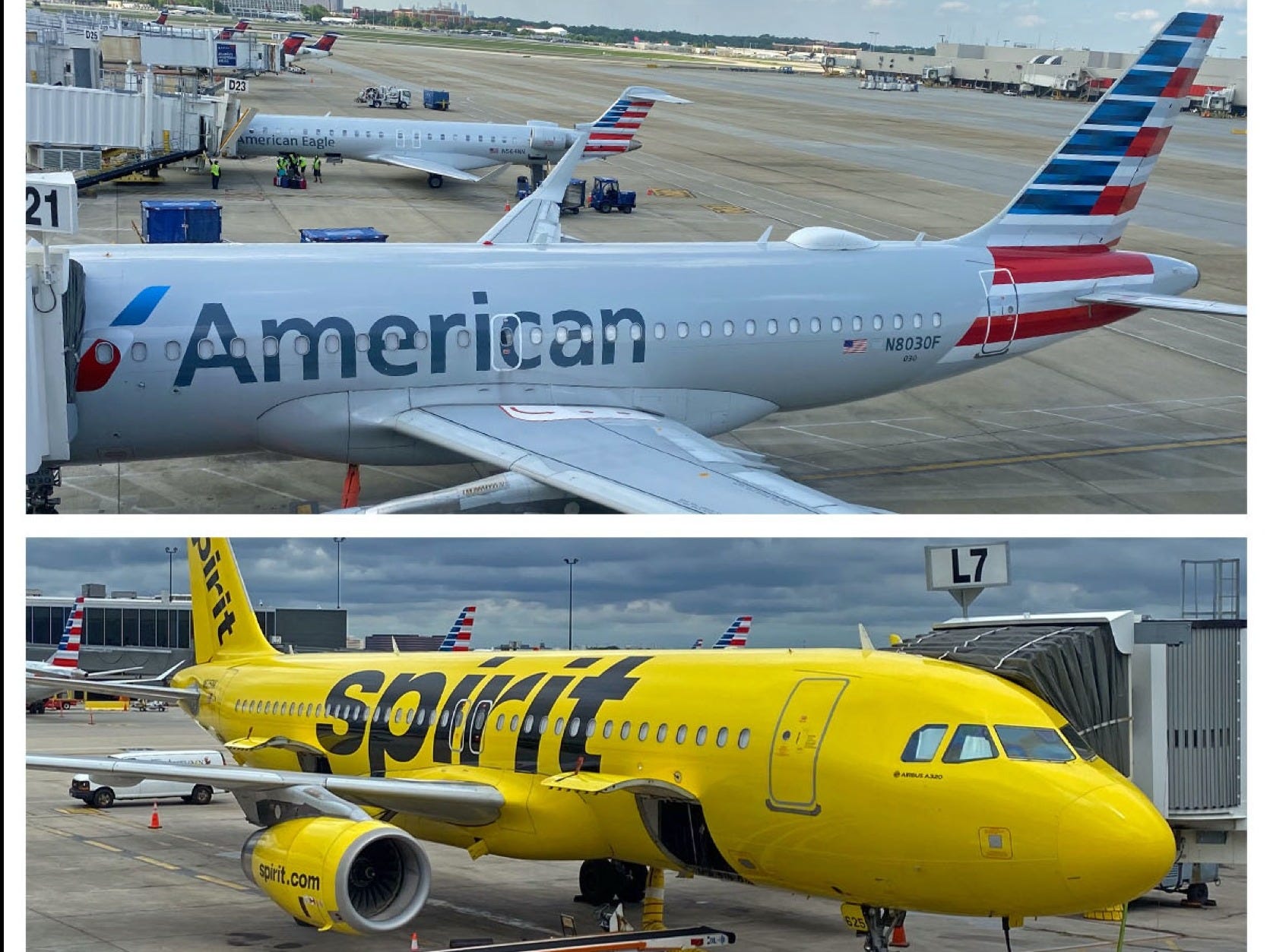- Airlines are adjusting their safety protocols and in-flight offerings during the pandemic but some are taking it too far.
- Having flown on the big four US airlines and low-cost airlines JetBlue Airways and Spirit Airlines, I saw that those are the top of the spectrum were behaving more like those at the bottom.
- American Airlines and Spirit Airlines – which couldn’t be any more different normally – were mirroring each other with the latter actually doing a better job in some respects.
- Visit Business Insider’s homepage for more stories.
The pandemic has been the great equalizer for aviation, so much so that there’s no longer a noticeable difference between some of the best and worst airlines in the US.
After flying on the big four US airlines – American, Delta, United, and Southwest – I was shocked to find that the largest and arguably most prestigious airline, American, was doing the least for passenger safety. But it wasn’t until flying on one of the country’s lowest-rated carriers, Spirit Airlines, that I realized just how poorly American was navigating the pandemic.
The experiences were surprisingly comparable, with Spirit actually outperforming American at times.
American Airlines began its descent into a low-frills carrier long ago following a merger with US Airways. Since then, the airline has adopted basic economy fares, done away with seat-back entertainment screens, begun charging for economy seat assignments on select flights, and started reducing legroom in coach.
I wasn't the biggest fan of American Airlines before the pandemic but I would've gladly flown them ahead of its low-cost competitors. However, the new realities of flying have turned the tables. Though American still boasts some creature comforts over its low-cost competitors, most of what made the airline better are now gone for the time being.
Here's how American and Spirit stacked up on my journeys this summer.
Booking the flights
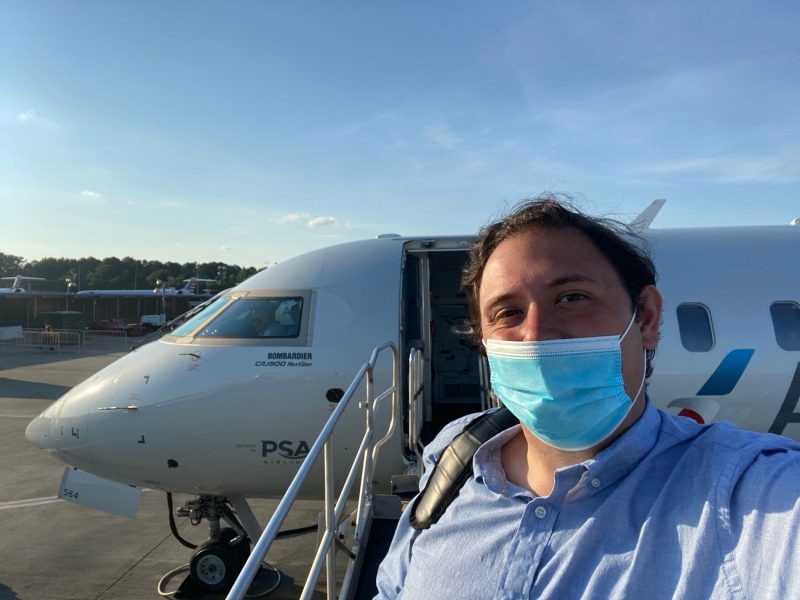
I flew American from Atlanta to Hartford, Connecticut with a stop in Charlotte versus a non-stop flight from Chicago to New York on Spirit. The flight on the former occurred in early June when daily passenger numbers for the US were still under 500,000 while the Spirit flight occurred on a day when the total number of passengers passing through TSA checkpoints was 737,235.
On both airlines, I chose the lowest fare possible with absolutely no add-ons or frills. American's basic economy fare is comparable to Spirit's base fare, though American does allow a carry-on bag while Spirit does not. Other than that, seats are assigned at check-in and changes are generally prohibited, although the new flexible booking policies have allowed for free changes on both airlines.
Both airlines don't hesitate to upsell with American wanting me to bump up to regular economy and Spirit wanting me to buy everything from a seat assignment to the right to check-in with an agent at the airport. Ancillary fees are big revenue drivers since they are not taxed, unlike fares, and airlines keep the whole amount.
Check-in
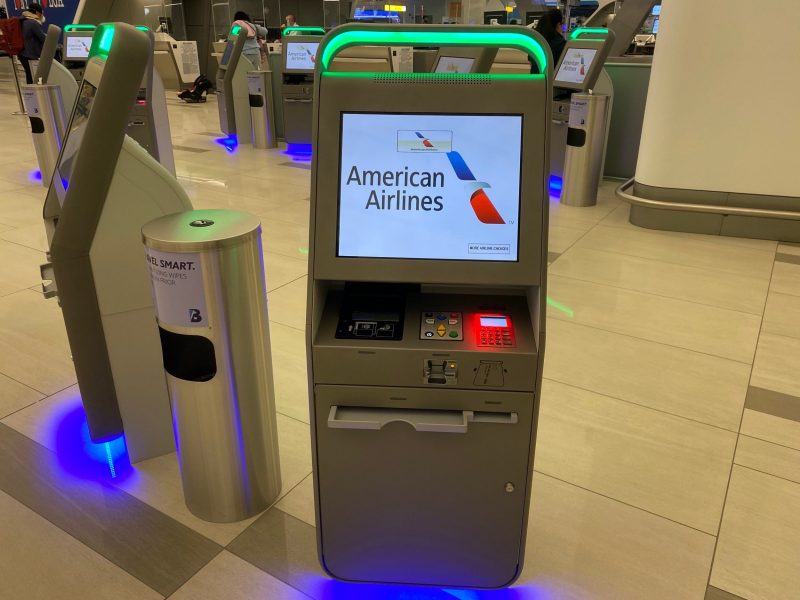
I checked-in 24 hours on the dot in advance on American and was assigned a window seat on my first flight - a regional jet service from Atlanta to Charlotte with only aisle and window seats - and a middle seat on my flight from Charlotte to Hartford. Both were in crowded rows with empty rows showing available on the seat map, though I couldn't move my seat thanks to my basic economy ticket.
American, at the time, was capping flight loads at 85% - which has since been removed and the airline can now fill planes to capacity - while Spirit never had those caps and has been filling its planes before American. Minus one point for both.
For my Spirit flight, I checked in quite late as a last-minute trip change on my outbound airline forced me to move up my trip by an entire day. To my surprise, I was automatically assigned an aisle seat. One point for Spirit.
Spirit restricting the assignment of middle seats - much like United Airlines - doesn't help on full flights but does prevent flyers from being assigned a middle unless absolutely necessary. That same safeguard doesn't exist on American, as I found, and I would have to rely on the kindness of an American gate agent to get it changed.
My flight was slated to be full on American and I was given the option to change my flight for free, though none were available to change to as airlines are flying fewer flights during the pandemic. It's an empty gesture as there are few backups nowadays with no guarantee that the next flight will stay empty.
Airport experience
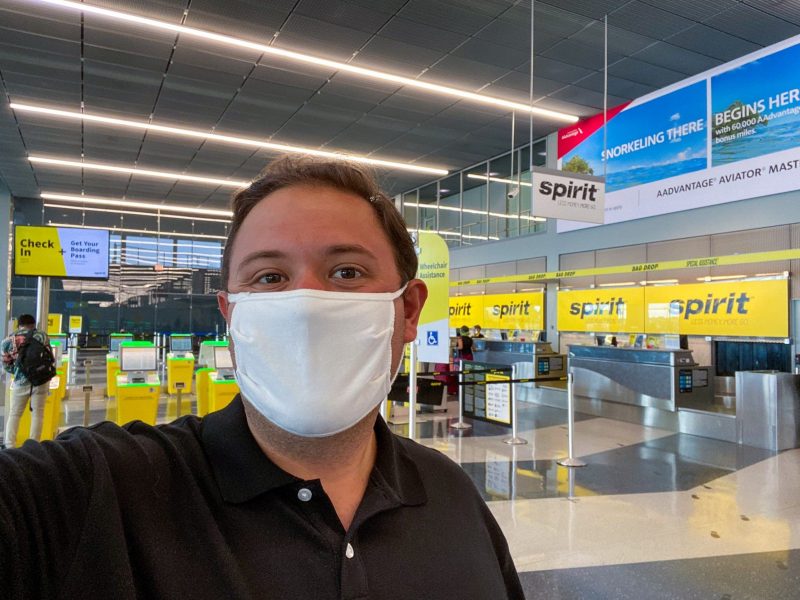
Both airlines are overhauling their airport safety practices to include wiping down frequently used surfaces in the terminal and installing plexiglass partitions at counters. Each introduced their own unique touches, such as Spirit installing hand sanitizer dispensers next to the boarding door while American highlights its new safety policy on gate display monitors.
All things considered, the gate experience was largely equal though Spirit was the first airline I saw with a hand sanitizer dispenser at the boarding door. One point for both here.
Neither airline had bothered to change its boarding procedure and basic economy passengers on American still boarded last, ensuring they'd have to walk through a crowded plane if seated in the back. Spirit's boarding process is already is a quasi-back to front order so it was less of an issue, though the front of the aircraft was reasonably filled.
Minus one point for both.
Onboard experience
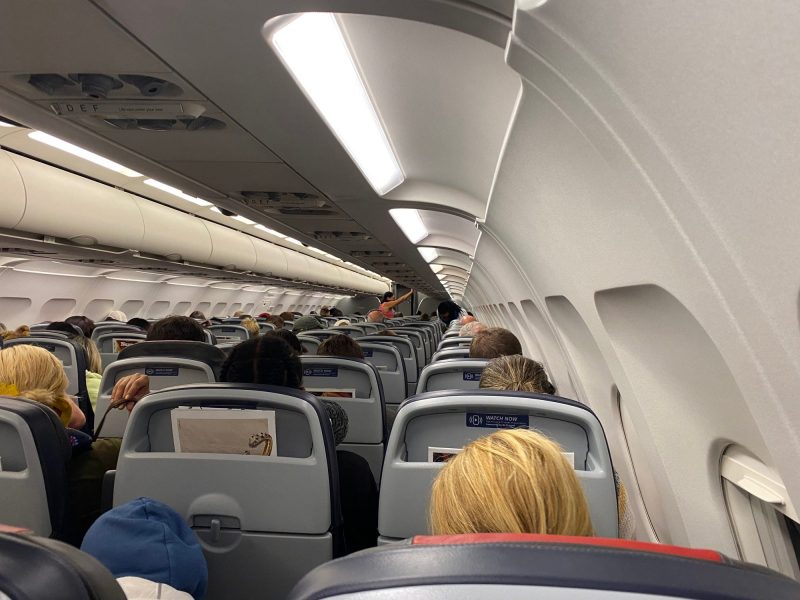
Face coverings are required on both American and Spirit with the former temporarily banning passengers who do not comply with the rule. Spirit has similarly cracked down, according to The Points Guy, but stopped short of banning passengers. One point for both here.
The two airlines are near identical when it comes to new onboard safety practices - as both aren't blocking middle seats - but Spirit has the upper hand onboard its aircraft the low-cost carrier is restricting the advanced assignment of middle seats, according to The Points Guy, with flight attendants on my flight proactively moving passengers around so middle seats could stay open.
On American, it was a free for all of passengers moving around trying to find an open aisle or window seat to avoid sitting in a crowded row. After boarding completed on my American flights, numerous passengers moved back to the empty rows of the aircraft after realizing they didn't have to cram into a row with two other people.
American had also received criticism for not letting passengers move seats to ensure distancing if the seat was a premium seat, such as an exit row, the New York Times reported in July.
Another point for Spirit.
Creature comforts
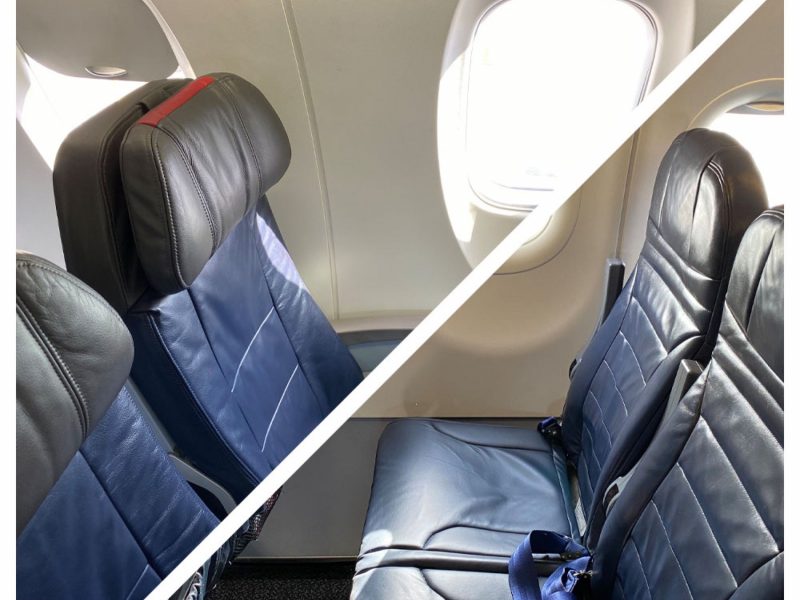
It's hard to praise Spirit for its seats as they are very basic without seat-back in-flight entertainment screens, in-seat power, adjustable headrests, or literature holders. American is not far off but its seats often come with in-seat power and most of its jets are equipped with WiFi that enables the use of streaming entertainment and some of its domestic aircraft still have seat-back screens.
In terms of legroom, the difference in pitch between the two jets that I flew on was two inches. The discomfort is more pronounced on longer flights and I found it to be fine for a short hop from Chicago to New York but I can deal with any seat for two hours.
Point for American here.
In-flight service
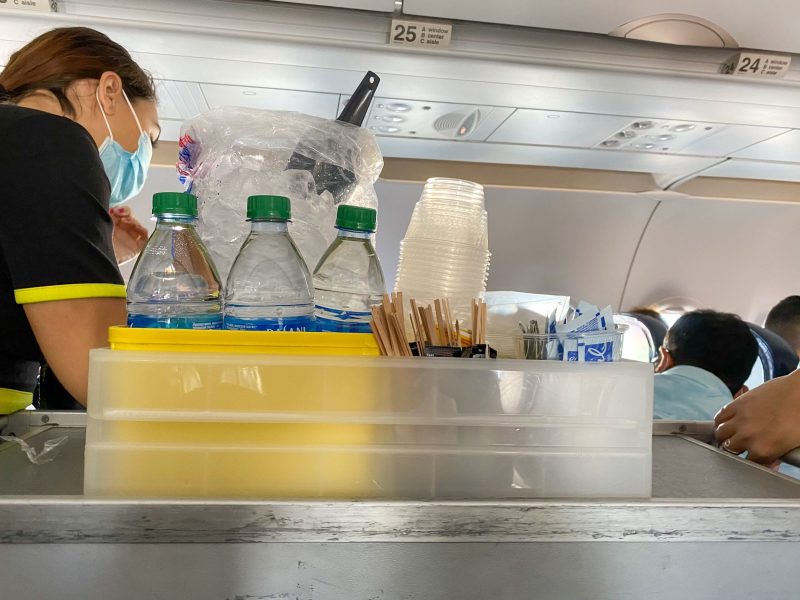
The pandemic has seen American abandon the in-flight service on most of its shorter domestic flights with only flights with lengths greater than 900 miles receiving a water bottle and snack as they board. My flight from Atlanta to Charlotte or Charlotte to Hartford didn't quite meet the cut, with the latter falling at under 700 miles despite being two hours in duration, and no snacks or beverages were offered.
My Spirit flight from Chicago to New York, however, saw flight attendants bring the beverage cart down the aisle as soon as we settled into our cruise altitude. It was the first time I had seen one since February when I took my last pre-pandemic trip on Delta. Even alcohol was available for purchase.
And Spirit isn't the only airline continuing to offer a service on shorter flights as Delta, JetBlue, and Southwest all continued to serve snacks and beverages on flights under two hours in duration. As View from the Wing reported, American has been all too eager to chip away at the service, even in its premium cabins, with the pandemic accelerating that trend.
One more point for Spirit.
So why pay more?
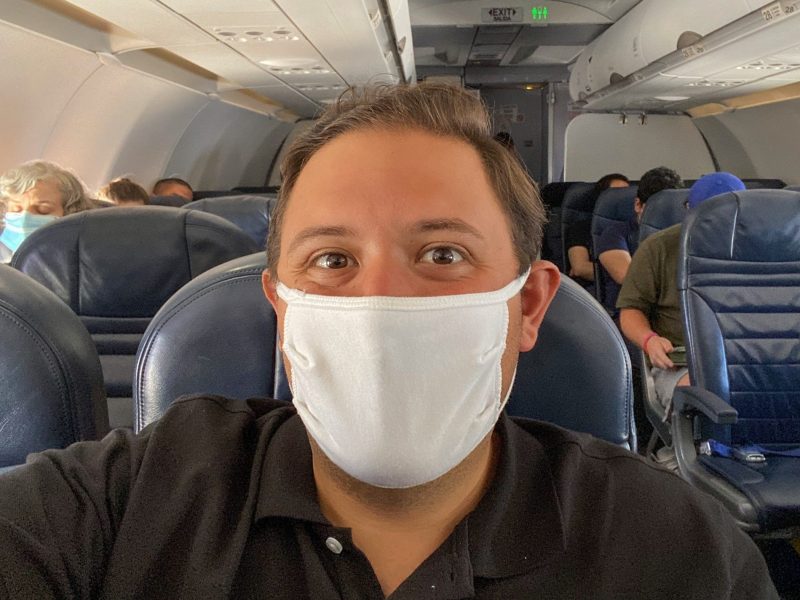
Having had a better overall experience with Spirit than American - and the former showing a near-complete lack of effort when it comes to pandemic when it comes to the onboard experience - I couldn't come up with a health and safety justification to pay more to fly American during this pandemic.
There will always be inherent advantages to flying a major carrier like American that Spirit can't offer, namely, the larger airline is better able to provide an alternate option when things go wrong. Spirit also lacks creature comforts like a free snack and beverage, streaming in-flight entertainment, adjustable headrests, and in-seat power, though most of those things can often be bought or made up for cheaper than the fare difference between the two on a given ticket.
With leadership at American using the pandemic as an excuse to continue chipping away at the iconic brand in favor of blatant cost-saving, I felt I was basically paying more for the illusion of a good airline and the few remaining comforts that it offers. And as the airline continues to overhaul its workhorse Airbus and Boeing aircraft by crowding them with as many seats as possible, The Points Guy reports, even that extra level of comfort is being taken away.

